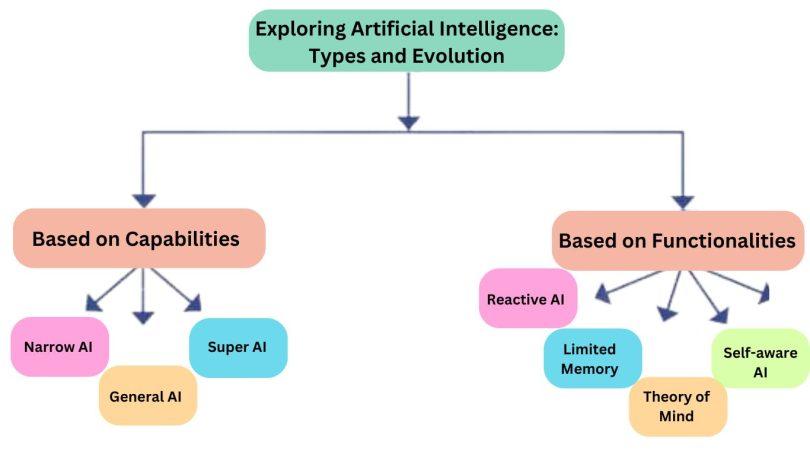Artificial intelligence (AI) stands as one of humanity’s most remarkable achievements, yet it remains largely uncharted territory. Despite the extraordinary applications of AI we see today, we have only begun to scratch the surface of its full potential. Even in its infancy, AI is already revolutionizing society.
Unfolding AI’s Landscape
Concerns about an imminent AI takeover are fueled by its remarkable capabilities and rapid expansion. Still, we’ve just scratched the surface of AI’s enormous potential. It’s critical to investigate the many forms of AI in order to comprehend its potential and constraints.
Artificial Intelligence Types
According to Capabilities:
1. Weak AI, or narrow AI:
Narrow AI may learn from data and is focused on particular activities or domains. It is essential for decision-making support, process automation, and increased productivity in a variety of industries.
Applications of Narrow AI:
– Self-driving cars
– Image recognition software
– Tools for mapping and predicting diseases
– Virtual assistants such as Alexa and Siri
– IBM’s Watson
2. General AI:
General AI aims to emulate human thought processes, reasoning, and decision-making. Although still in its early stages, it has the potential to revolutionize multiple functions, such as robotics and natural language processing.
3. Super AI:
Artificial Superintelligence (ASI) is predicted to surpass human intelligence. This AI type is self-aware and capable of solving complex problems, interpreting human emotions, and more. However, it remains a theoretical concept.
According to Functionalities:
1. Reactive AI :
Robots with reactive AI may react to tasks right away, but they are not able to retain information or learn from past experiences. They operate within defined parameters and are useful for simple autonomous tasks like spam filtering and basic recommendations.
2. Limited Memory :
Even AI systems with limited memory can decide by using the historical facts they have gathered. Modern AI applications such as virtual assistants and chatbots fall under this category.
3. Theory of Mind:
This advanced AI type aims to understand and remember human emotions, beliefs, and needs to make decisions based on that understanding. However, it is still in development by researchers.
4. Self-aware AI:
Self-aware AI is the ultimate goal of AI research, though currently theoretical. It would possess self-awareness akin to the human brain, with its own emotions, beliefs, and desires. However, such AI poses significant risks, including the potential for catastrophic outcomes if not properly managed.
Conclusion:
Even if AI is becoming more and more capable, there is still a lot to learn and explore. Each type of AI offers unique potential and challenges, shaping the future of technology and society.








